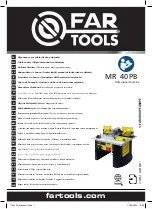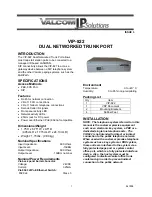
35-96
Cisco ME 3400 Ethernet Access Switch Software Configuration Guide
OL-9639-07
Chapter 35 Configuring IP Unicast Routing
Configuring Protocol-Independent Features
The two main components in CEF are the distributed FIB and the distributed adjacency tables.
•
The FIB is similar to a routing table or information base and maintains a mirror image of the
forwarding information in the IP routing table. When routing or topology changes occur in the
network, the IP routing table is updated, and those changes are reflected in the FIB. The FIB
maintains next-hop address information based on the information in the IP routing table. Because
the FIB contains all known routes that exist in the routing table, CEF eliminates route cache
maintenance, is more efficient for switching traffic, and is not affected by traffic patterns.
•
Nodes in the network are said to be adjacent if they can reach each other with a single hop across a
link layer. CEF uses adjacency tables to prepend Layer 2 addressing information. The adjacency
table maintains Layer 2 next-hop addresses for all FIB entries.
Because the switch uses Application Specific Integrated Circuits (ASICs) to achieve Gigabit-speed line
rate IP traffic, CEF forwarding applies only to the software-forwarding path, that is, traffic that is
forwarded by the CPU.
CEF is enabled globally by default. If for some reason it is disabled, you can re-enable it by using the
ip
cef
global configuration command.
The default configuration is CEF enabled on all Layer 3 interfaces. Entering the
no ip route-cache cef
interface configuration command disables CEF for traffic that is being forwarded by software. This
command does not affect the hardware forwarding path. Disabling CEF and using the
debug ip packet
detail
privileged EXEC command can be useful to debug software-forwarded traffic. To enable CEF on
an interface for the software-forwarding path, use the
ip route-cache cef
interface configuration
command.
Caution
Although the
no ip route-cache cef
interface configuration command to disable CEF on an interface is
visible in the CLI, we strongly recommend that you do not disable CEF on interfaces except for
debugging purposes.
Beginning in privileged EXEC mode, follow these steps to enable CEF globally and on an interface for
software-forwarded traffic if it has been disabled:
Command
Purpose
Step 1
configure terminal
Enter global configuration mode.
Step 2
ip cef
Enable CEF operation.
Step 3
interface
interface-id
Enter interface configuration mode, and specify the Layer 3
interface to configure.
Step 4
no shutdown
Enable the interface if necessary. By default, UNIs and ENIs
are disabled and NNIs are enabled.
Step 5
ip route
-
cache cef
Enable CEF on the interface for software-forwarded traffic.
Step 6
end
Return to privileged EXEC mode.
Step 7
show ip cef
Display the CEF status on all interfaces.
Step 8
show cef linecard
[
detail
]
Display CEF-related interface information.
Step 9
show cef interface
[
interface-id
]
Display detailed CEF information for all interfaces or the
specified interface.
Step 10
show adjacency
Display CEF adjacency table information.
Step 11
copy running-config startup-config
(Optional) Save your entries in the configuration file.
Summary of Contents for ME 3400 Series
Page 40: ...Contents xl Cisco ME 3400 Ethernet Access Switch Software Configuration Guide OL 9639 07 ...
Page 44: ...xliv Cisco ME 3400 Ethernet Access Switch Software Configuration Guide OL 9639 07 Preface ...
Page 1138: ...Index IN 52 Cisco ME 3400 Ethernet Access Switch Software Configuration Guide OL 9639 07 ...
















































